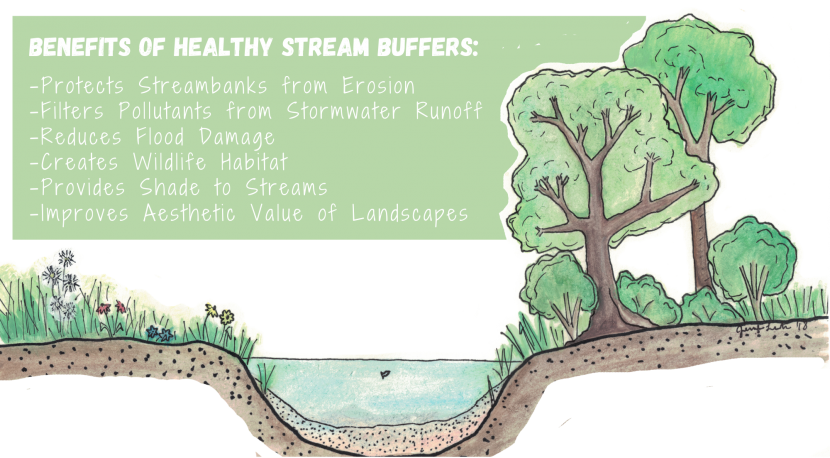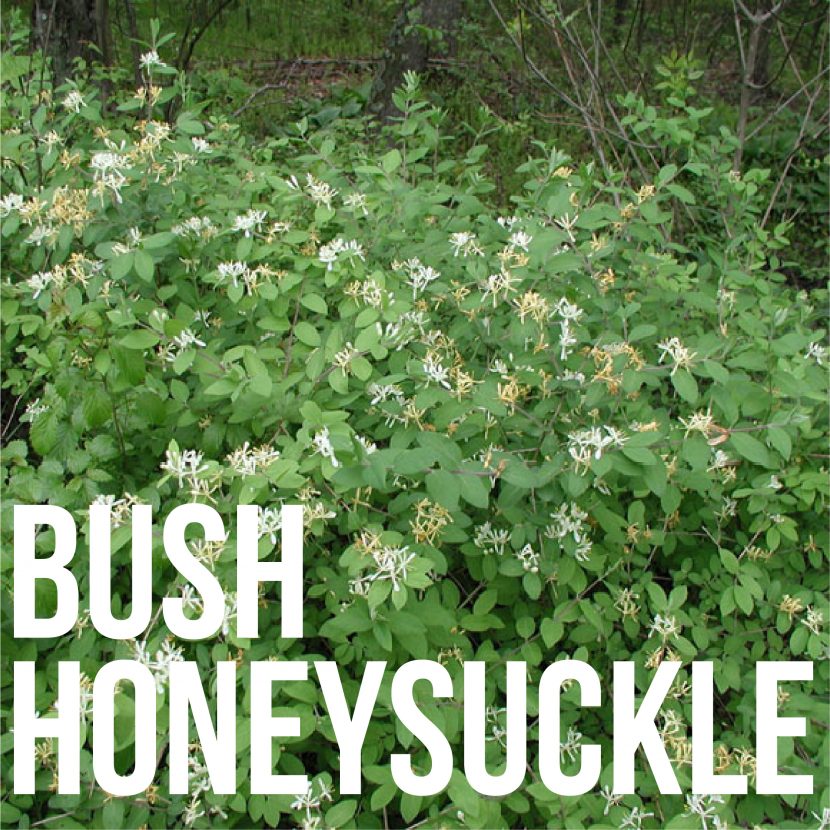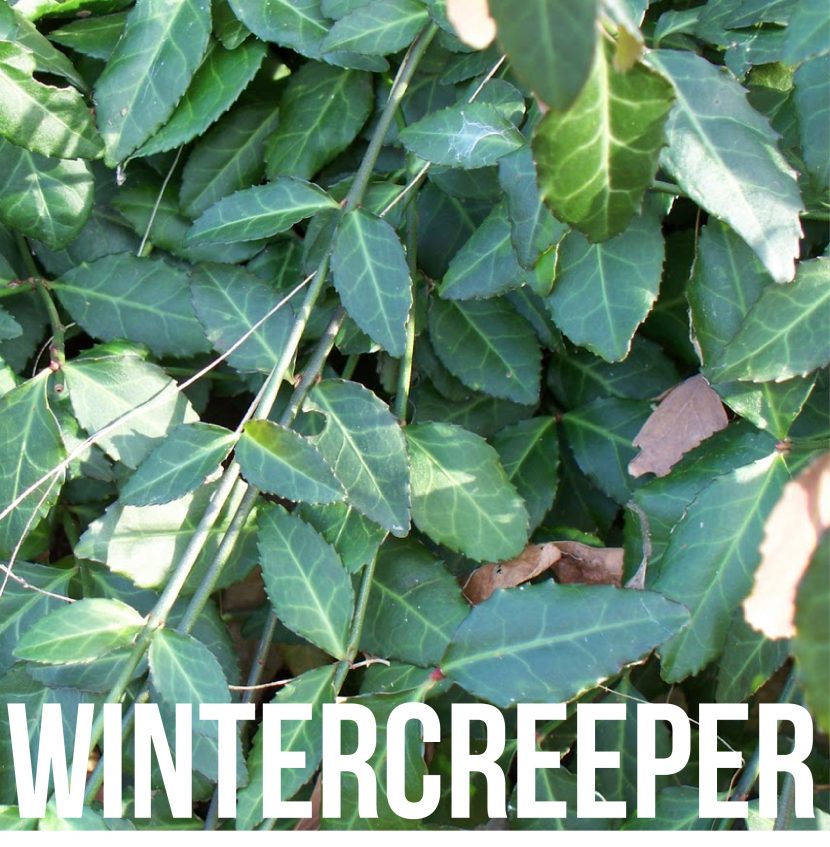Protecting Your Backyard Stream
How can you protect the stream in your backyard?
The best way to protect the stream in your backyard is by creating a riparian buffer. A riparian buffer is a vegetated strip or zone along a stream that protects it from impacts of our land use. Water quality benefits start at just 10 feet of buffer width from the streambank and improve with recommended widths of 15-30 ft, up to 100 ft as space allows. A healthy riparian zone consists of a combination of trees, grasses, shrubs, and perennials. It can be created passively or actively. While it is much better to actively create a buffer, a passive buffer is much better than no buffer.

Creating a Passive Riparian Buffer
To passively create a buffer, simply establish a no-mow zone of ideally 25 feet or more. Seeds will naturally be introduced to the area and grow into mature plants with time. While this is the easiest way to create a buffer, it is not optimal and can even be harmful due to the establishment of non-native invasive plants. These plants create subpar habitats for wildlife and are less effective at preventing the erosion of stream banks.
Actively Creating a Riparian Buffer
It is important to note that oftentimes permits are required for planting streamside buffer zones. Contact your local city or county government for specific information. The six steps to actively create a riparian buffer are site assessment, planting plan development, site preparation, species selection, planting, and protection and maintenance. To begin, the banks must be evaluated and possibly graded before planting. Then the boundaries for the space must be identified so the number and type of plants needed can be determined. The spacing suggestions are 7-8 feet for trees, 3-5 feet for shrubs, and 1-3 feet for grasses. Factors like water tolerance, project goals, and aesthetics should be considered when selecting species, and native species are always preferred! The actual planting can be completed in many different ways. Once finished, consider putting up fences and signs to protect your riparian buffer. Seedlings may require various methods of maintenance in the beginning. In general, riparian buffers require little maintenance, but it is a good practice to visit each season and pick up litter, assess plant growth, remove invasive species, and look for erosion. Take pictures to document your project, as well. For in-depth descriptions of each step and extra tips read the Planting a Riparian Buffer guide and the other references!

Funding Guide

Funding Option:
- Talk to your local conservation district office about the Kentucky Cost Share Program!
- Contact your Local Natural Resource Conservation District Office for information on the Environmental Quality Assistance Program and the Continuous Conservation Reserve Program!


